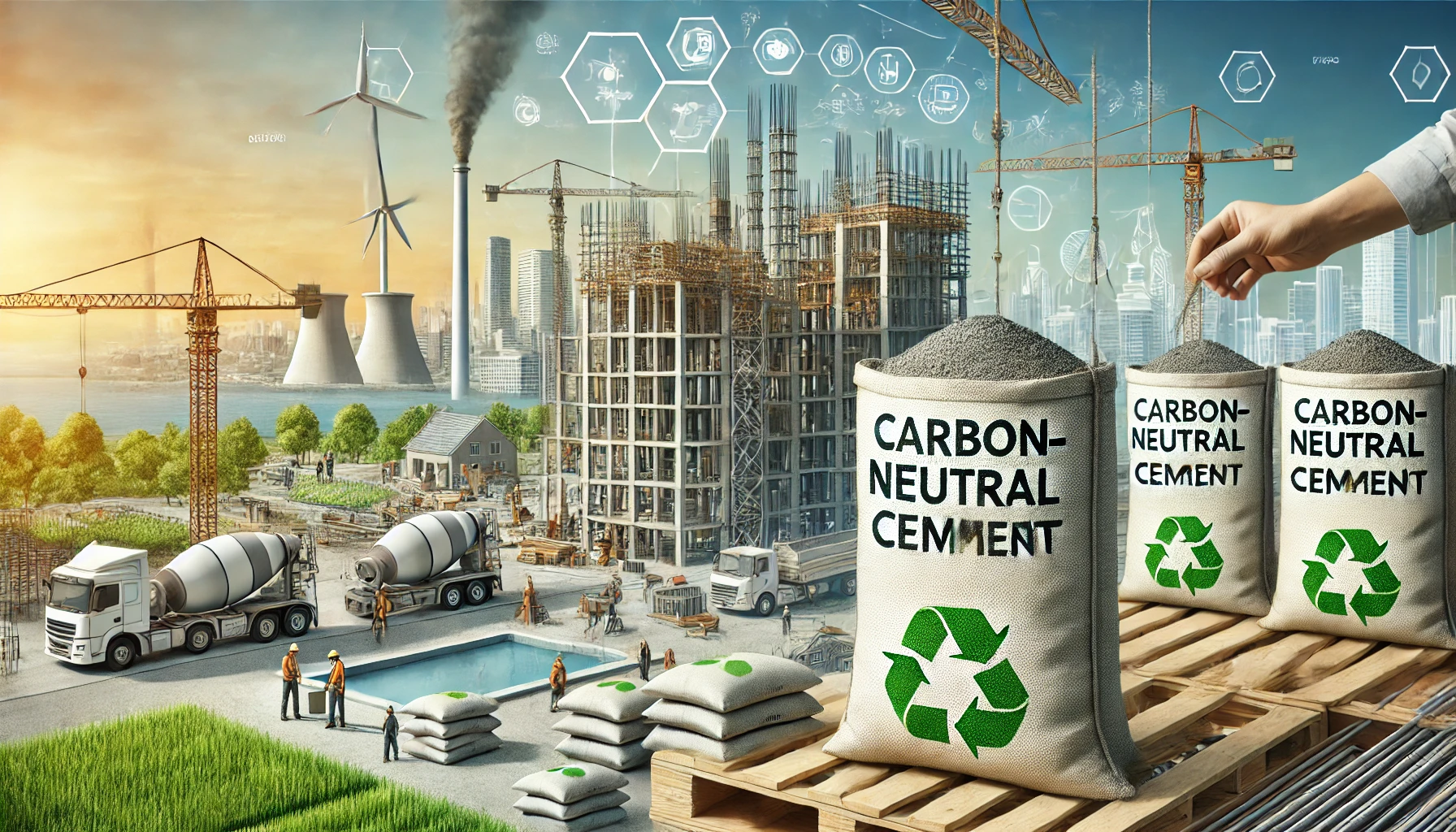As the world intensifies its efforts to combat climate change, the construction industry faces growing pressure to reduce its carbon footprint. Cement, a critical material in construction, is a significant contributor to global CO2 emissions, accounting for approximately 8% of the total. This has led to an urgent need for innovative solutions that can deliver the same structural integrity while aligning with global decarbonization goals. Enter carbon-neutral cement—an emerging technology that could revolutionize the construction industry.
The Challenge of Traditional Cement
Traditional cement production is a carbon-intensive process. The key ingredient, clinker, is produced by heating limestone (calcium carbonate) to high temperatures, which not only consumes a vast amount of energy but also releases CO2 as a byproduct of the chemical reaction. This dual impact makes cement one of the most carbon-heavy materials in the world.
With global urbanization and infrastructure development on the rise, cement production is expected to grow, potentially exacerbating the climate crisis. Thus, the development of carbon-neutral alternatives has become a priority in the push towards sustainable construction practices.
What is Carbon-Neutral Cement?
Carbon-neutral cement refers to cement that is produced in a way that minimizes or entirely offsets its carbon emissions. Researchers and companies are exploring various approaches to achieve this, including:
- Alternative Raw Materials: One approach is to replace or reduce the use of clinker with alternative materials such as industrial byproducts (e.g., fly ash, slag) or other natural materials (e.g., calcined clays). These materials can lower the carbon intensity of cement production.
- Carbon Capture and Storage (CCS): Another promising method involves capturing CO2 emissions during the cement production process and storing them underground or using them in other industrial processes. This technology can significantly reduce the carbon footprint of cement manufacturing.
- Innovative Cement Formulations: Researchers are also developing new types of cement that require less energy to produce or that absorb CO2 over their lifecycle. For example, some formulations use magnesium silicates, which can naturally absorb CO2 as they harden, effectively making the material carbon-neutral or even carbon-negative.
- Energy Efficiency Improvements: Enhancing the energy efficiency of cement production facilities through modernized equipment and renewable energy sources can also contribute to reducing emissions.
The Role of Carbon-Neutral Cement in Decarbonization Goals
The adoption of carbon-neutral cement is critical to meeting global decarbonization targets, particularly in sectors like construction that have historically been challenging to decarbonize. Governments, industry stakeholders, and financial institutions are increasingly recognizing the importance of sustainable construction materials. For instance, major financial institutions like J.P. Morgan have highlighted the potential of carbon-neutral cement as part of broader sustainability initiatives.
Moreover, regulatory frameworks and green building standards are beginning to incentivize or mandate the use of low-carbon materials, further driving research and adoption. The construction industry stands at the cusp of a transformative shift, where the materials used will play a pivotal role in determining the environmental impact of future buildings and infrastructure.
The Road Ahead
While the development of carbon-neutral cement is still in its early stages, the progress made so far is encouraging. As research accelerates, it is likely that more cost-effective and scalable solutions will emerge, making carbon-neutral cement a mainstream choice in construction.
However, widespread adoption will require collaboration across the supply chain, from cement manufacturers to builders and policymakers. Investment in research, infrastructure, and incentives will be essential to overcoming the current barriers and making carbon-neutral cement the new standard.
In conclusion, carbon-neutral cement represents a critical innovation in the fight against climate change. As global decarbonization goals become more ambitious, the construction industry must evolve to support these objectives. With continued research and commitment, carbon-neutral cement could pave the way for a more sustainable future in construction.




